Timna, Israel
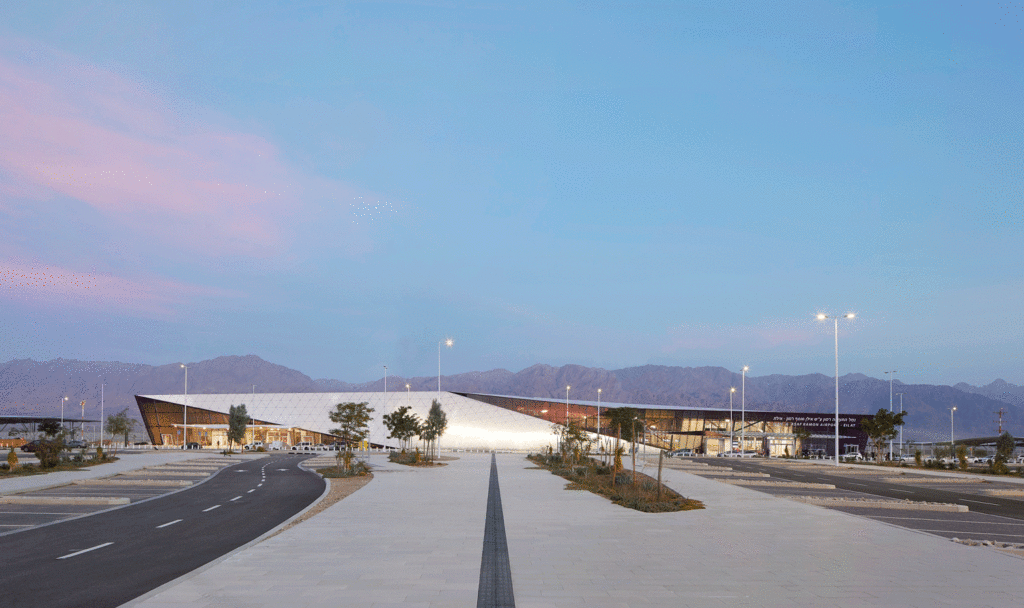
The following description is courtesy of Amir Mann-Ami Shinar Architects and Planners.
The country’s newest airport is a futuristic desert mirage built into the timeless natural surrounding and becomes the new Southern gate to Israel by the Red Sea
Amir Mann-Ami Shinar Architects and Planners in partnership with Moshe Zur Architects, two of Israel’s leading firms, announce the opening of Israel’s Ilan and Asaf Ramon International Airport, servicing the Red Sea resort city of Eilat and surrounding region. Commissioned by the Israel Airport Authority (IAA), the project was handled from A to Z by design manager, Architect Amir Mann. Located in Timna, it is Israel’s first civil airport built from scratch (“greenfield”).
Spread across 1,250 acres, the airport is a minimalist and futuristic design in the middle of the Negev Desert, wholly unified under one architectural language. The architects served as project design managers, leading more than 45 consulting firms, nearly all local Israeli engineers, alongside ARUP London’s aviation team. Situated just 18 KM north of Eilat, the Ilan and Asaf Ramon International Airport will become a major game changer for local and international tourism to Israel, Jordan
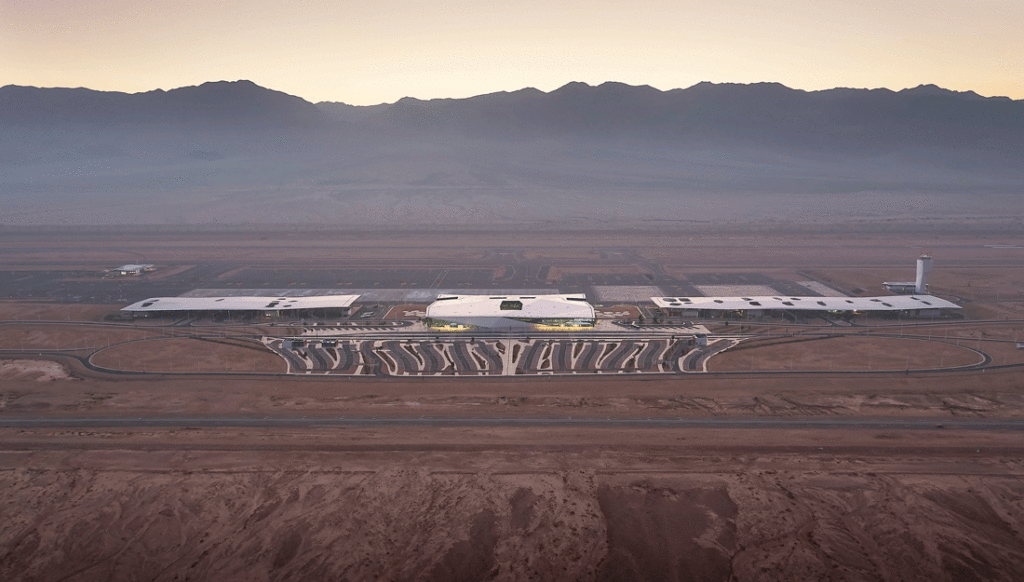
The Ilan and Asaf Ramon International Airport was completed with significant achievements, firstly, an international airport fully constructed and operational within budget, funded for less than half of similar projects worldwide; on schedule for opening day within an exceptionally tight timeframe; a “greenfield” without existing infrastructures, included the creation and implementation of cutting edge navigation, landing, and baggage handling systems, runways, and operational buildings – while maintaining the existing natural surrounding and a control of quality; all led by the team of architects to a rather extraordinary feat – the entire airport is unified under one unique holistic design language that frames the stunning scenery of the Negev Desert mountainscape.
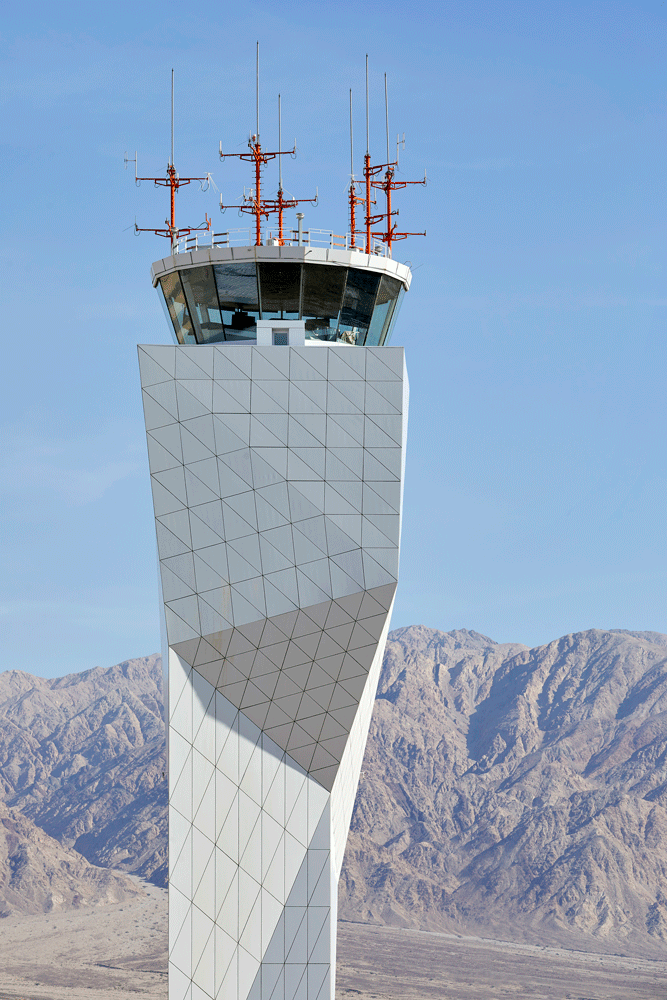
The Airport features a 45,000 square-meters Passenger Terminal Building and 3,600 meters long runway and taxiway, alongside 40 aprons, allowing for domestic and international traffic. The two support structures to the north and south of the terminal measure a combined 36,210 square-meters with a 45 meters-high Air Control Tower.
The opening of the Ilan and Asaf Ramon International Airport will coincide with the closing of the existing J. Hozman Eilat Airport that is currently located in the middle of the city of Eilat. The old airport was a barrier within the city, dividing and disrupting its development. With its annulment, the city’s urban fabric will be able to unite, surfacing potential opportunities and regeneration. The Ilan and Asaf Ramon International Airport will serve as the new southern gate to Israel and is expected to host 2.25 million passengers per year, that figure bound to grow to an estimated 4.25 million passengers per year.
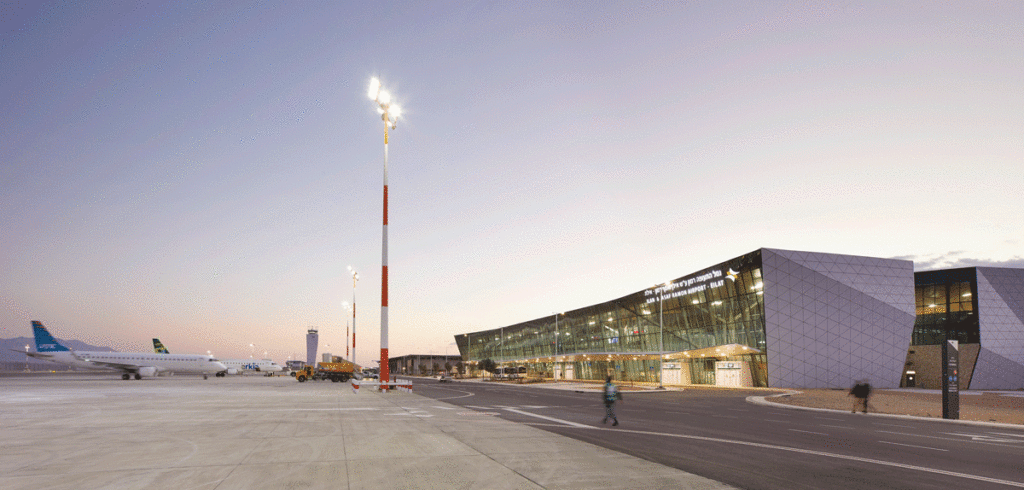
For the project, the architects developed a unique and minimal design language influenced by the futuristic world of aviation and its seemingly timeless natural desert surrounding. The decision of the IAA to appoint the architects as design managers responsible for budget, program, and planning schedule, allowed for the architects to implement the design across the entire airport – from the various buildings to each individual check-in counter, thus unifying the airport on all its parts into a holistic singular entity within the dramatic emptiness of its surrounding. This is evident from a general concept of carved geometries, through a limited choice of materials used to clad the family of forms.
“In designing the airport we learned from the desert scenery. It required a vision of the most suitable design solution that responds to the existing landscape and climate. Our objective was how not to compete with the overwhelming emptiness of the site, while creating a place that welcomes passengers through the departure and arrival processes, reflecting through that experience the uniqueness of the desert environment, as a functioning international southern gate to Israel.” – Project Design Manager, Amir Mann.

The mushroom-like rock formations found in Israel’s National Timna Park served as inspiration for the initial geometry of the Passenger Terminal Building as a self-shading volume. Just as the rocks are shaped by the “natural movements” of wind and water, the terminal’s opaque volume was carved by the “natural movements” of the passenger traffic: at the entrances and exits, at the divisions between arrivals and departures, and between the check-in and boarding gate halls. At every such

The terminal’s envelope consists of a steel and concrete skeleton structure,
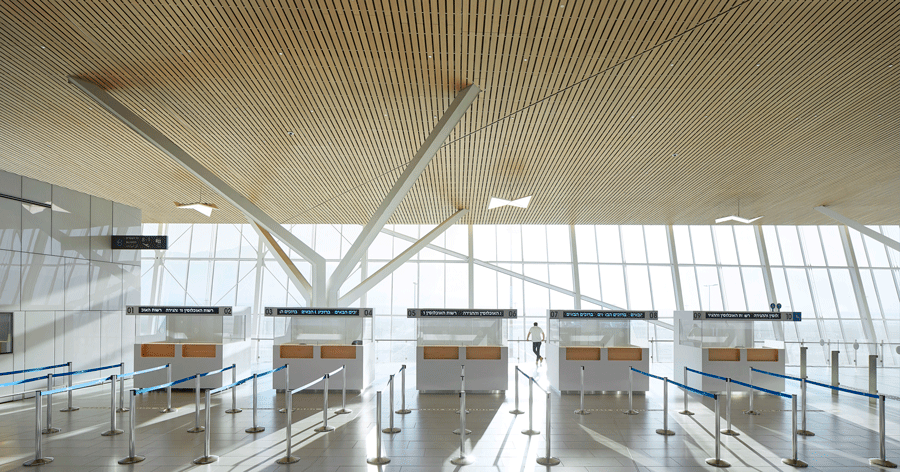
The terminal building’s minimalist interior scheme is based on a tightly organized high-ceilinged hall with low-level furniture and pavilions acting as dividers. Its entire infrastructure including baggage handling, security processes, and many other technical operations and systems are all hidden on a lower level. This allows for the roof to be free of any technical equipment as a fifth façade viewed from the airplane window, and for all passenger processes to be

The landscape design development drew inspiration from the existing river delta fan created by the mountain flooding into the desert valley. Thus, the delicately winding paths of the parking lot and the landscape development follow the shape of the natural spill from the streams. As part of the aspiration to preserve and integrate the landscape with the environment, and with the intention of maximizing the use of existing local materials, all the sand and rock infrastructure excavated at the site was used as a filler for the construction of the runways, the airplane hardstands, and the roads. To this end, a grinding factory was set up to crush the pebbles into bedding materials. The land collected during dig was also used to finally cover the ground upon completion of construction to seamlessly integrate the landscape development with the natural surrounding. In addition, local plant seeds were harvested and preserved at the site, grown and incubated in greenhouses during the years of construction, and finally returned to their original location, to serve as the desert vegetation lining the airport’s landscape.
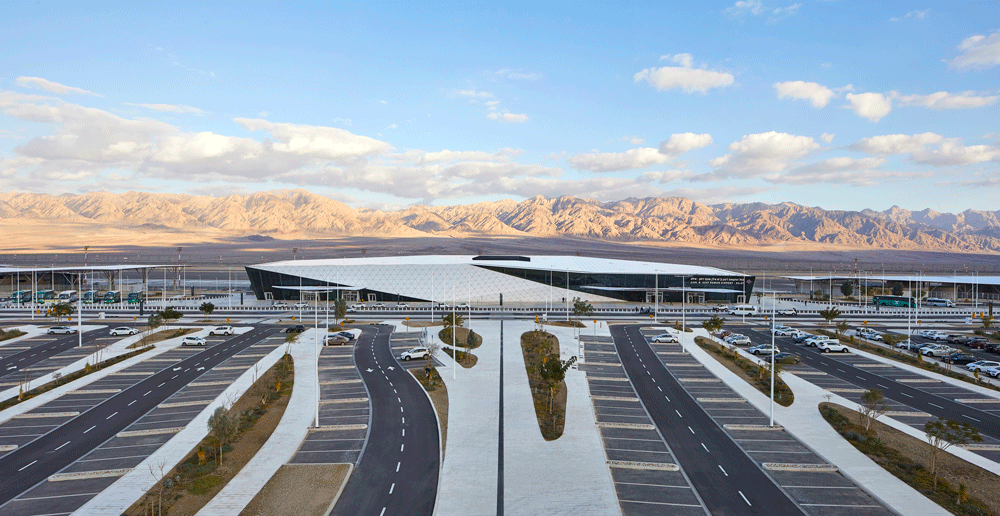
Project Credits
Client: Israel Airports Authority (IAA) – Yaacov Ganot, Directing Manager Rafi Elbaz, Deputy Director General of Engineering & Planning Division
Design and Planning Management: Amir Mann – Moshe Zur – Ami Shinar – Orna Zur Architects
Design Manager: Amir Mann, Architect
Construction Management: Gadish-Baran Partnership
Construction Manager: Eng. Ron Havatzelet
Aviation Consultant: ARUP London with Amir Mann-Ami Shinar Architects and Planners
Engineering: The Overall Design Team includes over 45 local Israeli Engineering Firms
For more information on the Ilan and Asaf Ramon International Airport, please
Amir Mann – Ami Shinar Architects
The office of Amir Mann and Ami Shinar focuses on the architectural and urban design of a wide spectrum of projects, ranging from city planning, new urban quarters, residential neighborhoods as well as new office, commercial, high-tech and public buildings. Recent and upcoming projects include: the National Library of Israel in Jerusalem (in partnership with Herzog & De Meuron Architects); the American Consulate General in Jerusalem, commissioned directly by the US State Department; the Shenkar School of Fashion in Tel Aviv; the new Haifa Waterfront Masterplan; the Beer Sheba 2030 City Masterplan; the Rishonim Office Tower and Commercial Center for the Azrieli Group; the Israeli Ministry of Justice in




